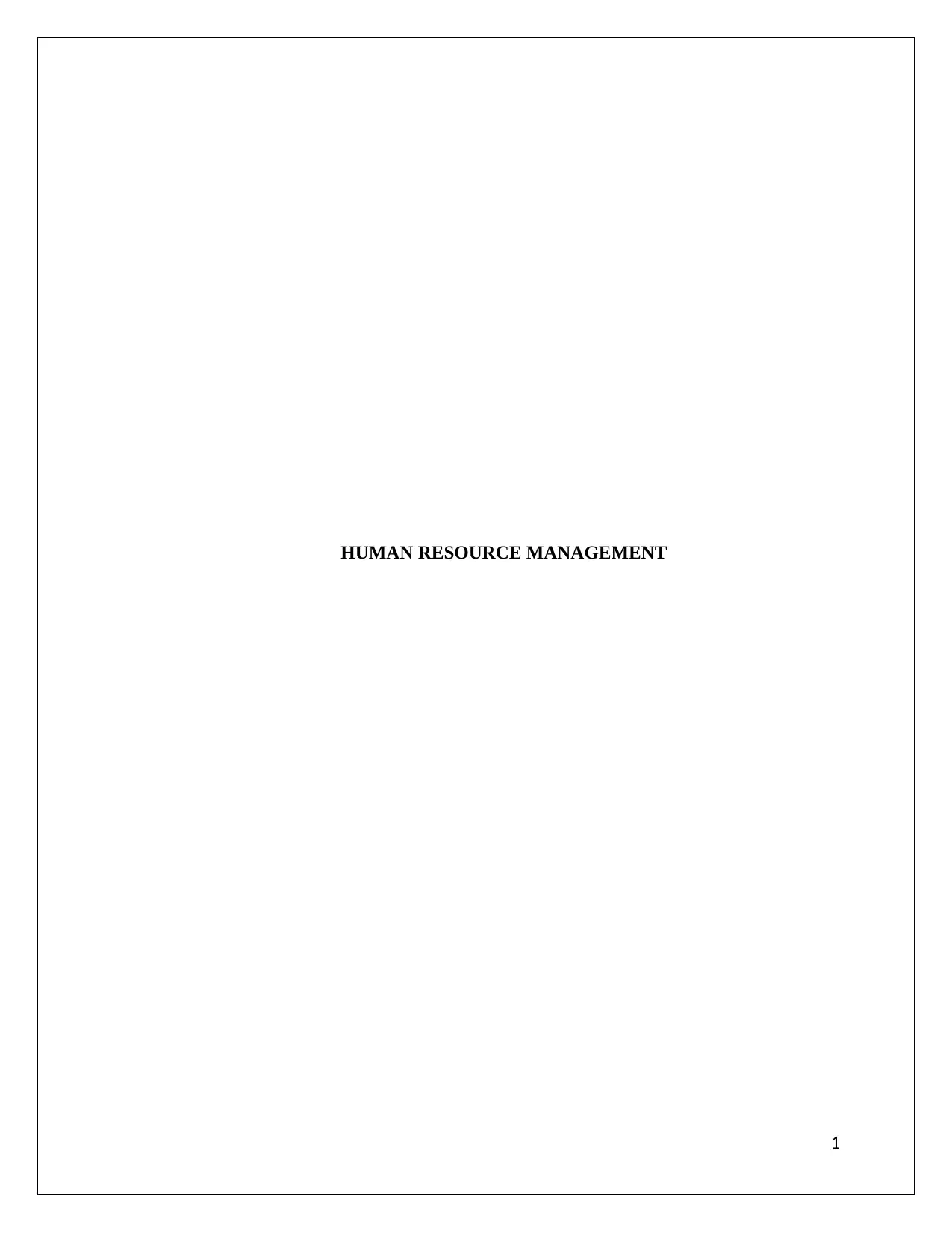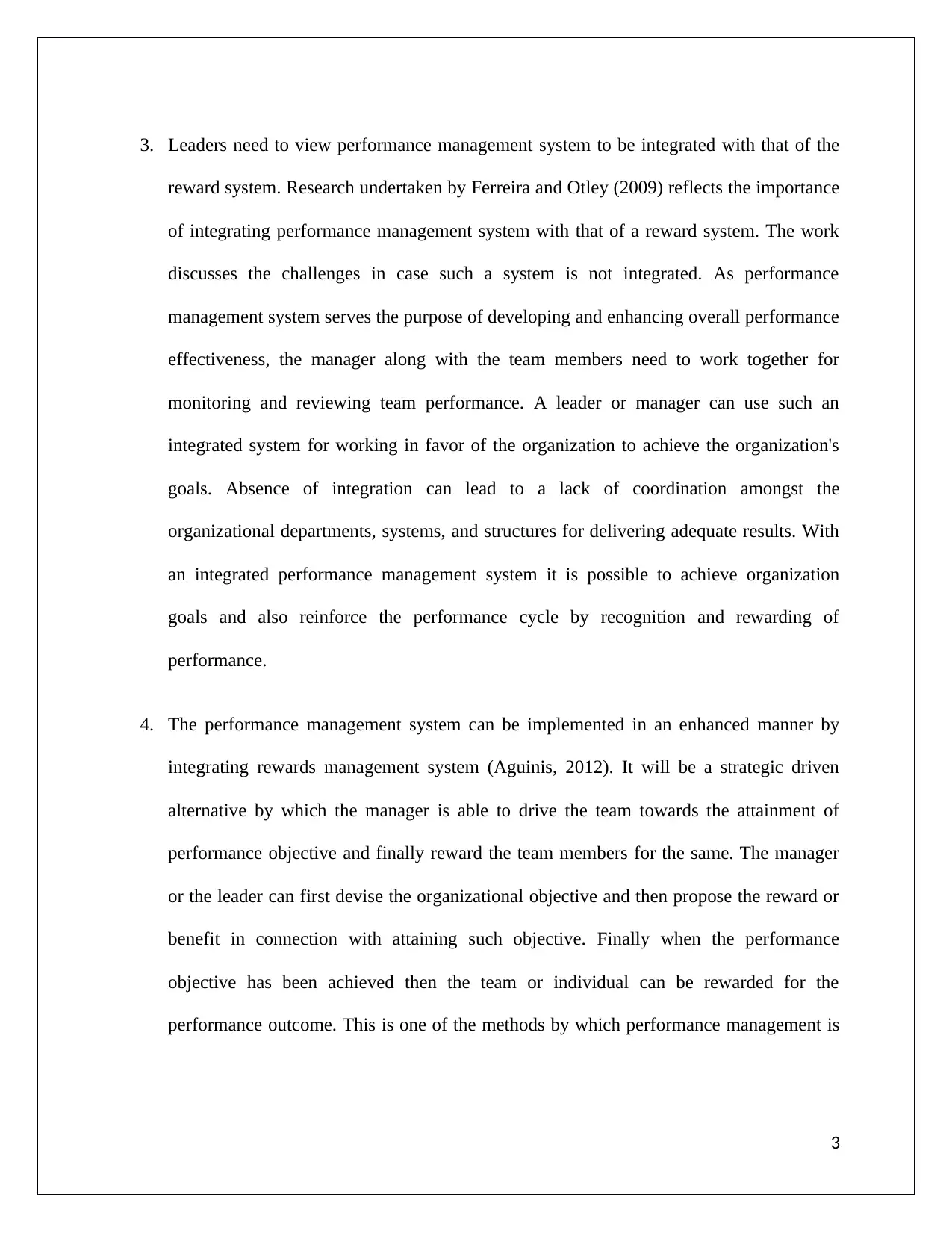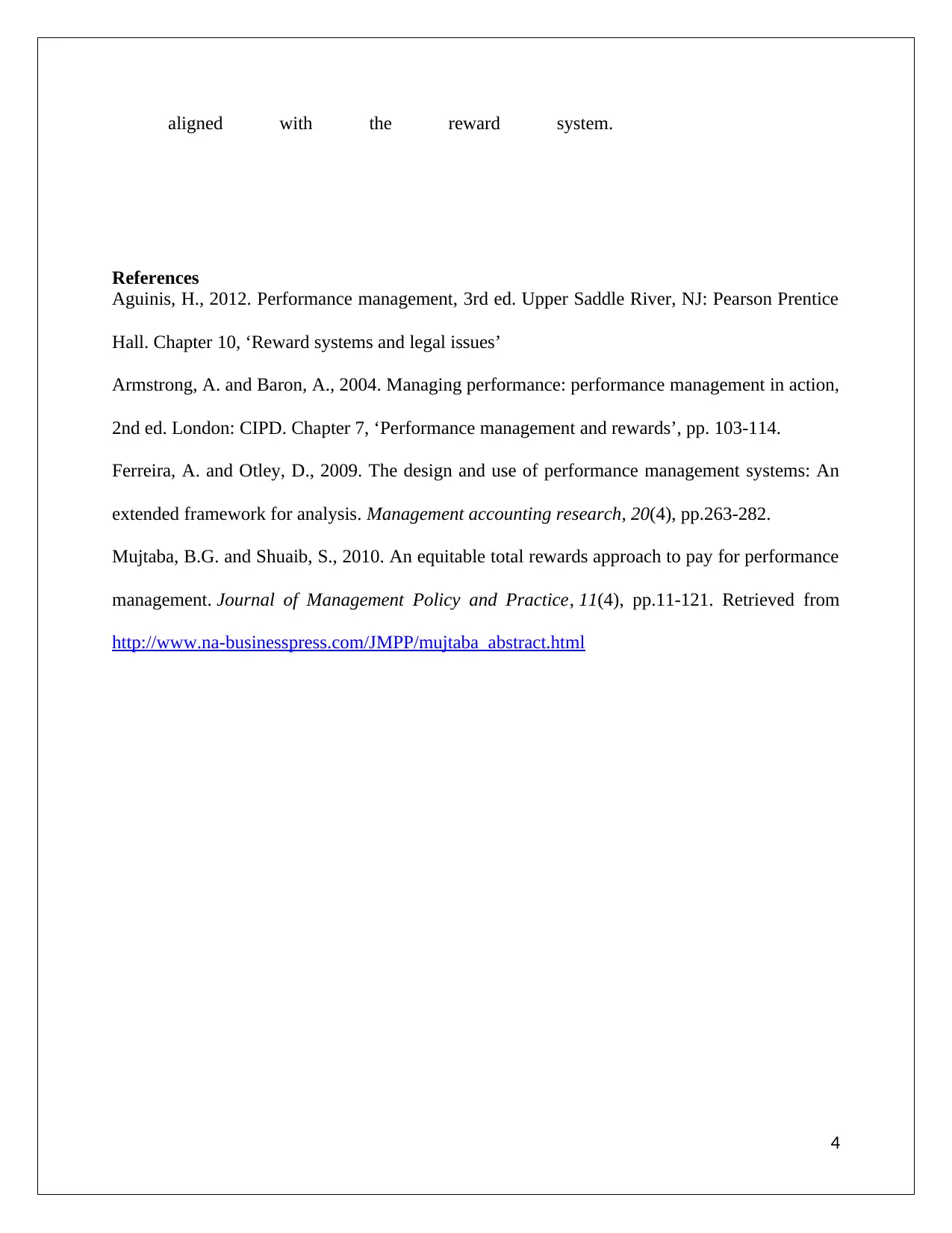Integrating Reward Systems with Performance Management in HRM
VerifiedAdded on 2022/12/03
|4
|713
|314
Report
AI Summary
This report examines the critical integration of reward systems (including compensation and benefits) with performance management within the framework of Human Resource Management (HRM). It emphasizes the importance of aligning organizational objectives with individual skills and competencies to overcome implementation challenges. The report delves into how a well-integrated system can enhance employee engagement, capability, and overall performance, while also addressing potential ethical and legal challenges that may arise. It highlights the significance of leadership in connecting performance management with reward systems, referencing scholarly sources to support its arguments. The report proposes methods for improving performance management systems through reward management integration, outlining how managers can drive team performance toward achieving organizational goals and subsequently rewarding the team members for their accomplishments. The discussion covers the strategic alignment of rewards with performance objectives to reinforce a cycle of recognition and achievement within the organization.
1 out of 4











![[object Object]](/_next/static/media/star-bottom.7253800d.svg)